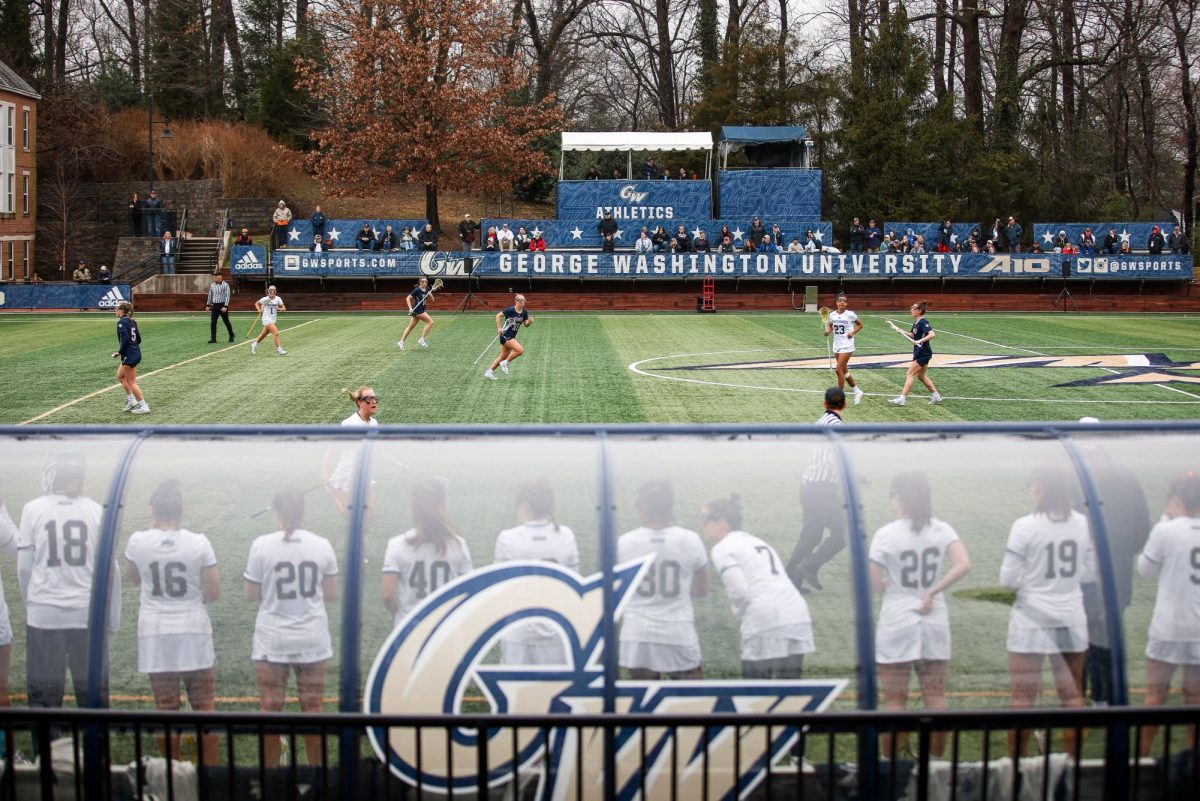In politics, a skeleton in the closet can be career ending.
But for graduate student and Student Association Sen. Chris Hedquist, his skeletons have enabled him to travel the world, gain celebrity abroad, win medals and even acquire his own Wikipedia page.
Hedquist, who serves as both the vice president of the GW MBA Association, and a senator representing the Business School in the SA, has since retired from the world of skeleton racing, a fast-paced sledding sport in which the athlete lies head-first on a stripped-down sled (hence the name “skeleton.”)
“It is the most fun thing you can do in the world,” Hedquist said. “The first time I did it I was just laughing the whole way down because it is that much fun.”
At the height of his career he captured the overall European Cup in 2004, becoming the first American sledder to do so. A year later he won the World University Games Championships. In his final season on the World Cup circuit he was ranked seventh in the world. He can’t remember how many medals he has won.
The 28-year old always had extreme aspirations. He began competing in luge from the age of 12, discovering the sport when the U.S. team held tryouts near his home in Salt Lake. He even dabbled in freestyle mogul skiing.
His career in skeleton began after Tristan Gale, a female friend and skeleton gold medal winner at the 2002 Winter Olympics, recommended he try it.
“She basically recruited me over (from luge). I wasn’t really going anywhere with luge – it was kind of off and on – so I jumped over to skeleton,” Hedquist said. “It just took off and got out of control from there.”
Hedquist was an alternate on the 2006 U.S. Olympic team that competed in Torino. After not making the cut, he decided to accept a position as the coach of Ireland’s national team.
The sport originated in St. Moritz, Switzerland, where it was included in the Olympic games for the first time in 1928. It was permanently added to the Winter Olympics in 2006.
While it takes place on the same track as the bobsled and luge races, skeleton racing is notable for the head-first position – steering and braking are controlled only by the movements of the athlete’s body. But despite the high-speed and rapid turns, Hedquist said he has only had one “bad hit.”
“You’re going like 85 miles per hour and you don’t notice how precarious it is until you make a mistake, and then it’s like ‘Oh crap, I’m totally out of control.'”
He continued, “I came off the top of a 20-foot curve, and smashed my sled into the side of the wall. You wear a mouth guard and everything, but I hit so hard it knocked me out. I probably was out for like three or four curves, and then I came to. I ended up chipping like two teeth.”
But Hedquist insists that skeleton is safer than most sports. Most skeleton injuries originate from the running at the beginning of the race to propel the sled, and result in pulled hamstrings, not concussions.
For Hedquist, running his SA senate race was considerably easier than running a skeleton race – especially considering he didn’t know he was up for the senator position.
“I actually didn’t decide to run; I ran for the VP of the MBAA and I won that. Consequently, there was an election for the SA and my name got written in on the ballot,” Hedquist said. “I got an email saying, ‘Hey you won a seat.'”
And although he did not actively choose the position, he has embraced it and enjoys the work. It allows him to help his program, which Headquist said is the best part.
He retired from racing last year, served briefly as the coach of Ireland’s Olympic team and hopes to translate his background and travel into a career in international business. He said racing has given him confidence, which he employs in his other life at presentations and meetings.
So will Hedquist encourage his eight-month old son to pick up sledding?
“I’m thinking I’m going to do more mainstream sports with him,” he said.





